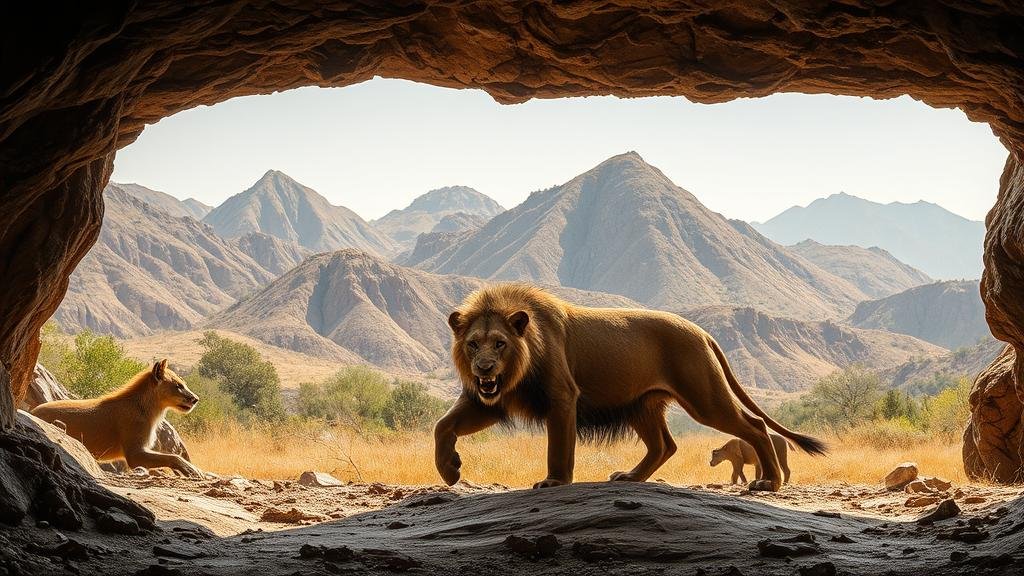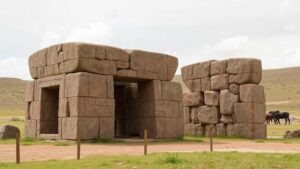Exploring mountain caves for evidence of the nearly extinct cave lion.
Exploring Mountain Caves for Evidence of the Nearly Extinct Cave Lion
The cave lion, or Panthera leo spelaea, roamed the Earth during the Pleistocene Epoch, approximately 300,000 years ago, and became extinct around 14,000 years ago. This majestic predator inhabited various regions, including Europe, Asia, and North America. Recent explorations into mountain caves have sparked interest in uncovering evidence of this fascinating creature. This article delves into the compelling reasons for these explorations, the significance of the finds, and the methods used by researchers.
The Significance of the Cave Lion
The cave lion is notable for its size and impressive physical attributes. Larger than today’s African lions, it featured a distinct skeletal structure adapted to cold climates. Researchers estimate that the cave lion stood over four feet tall at the shoulder and weighed between 350 to 600 pounds. Findings suggest that these animals primarily preyed on large herbivores, including reindeer and mammoths, which were abundant during the Pleistocene.
Understanding the cave lions behavior and ecological role sheds light on the dynamics of prehistoric ecosystems. Importantly, cave lions are frequently mentioned in ancient human artifacts, such as cave paintings in Lascaux, France, dating back to around 15,000 years ago. This shows that humans and cave lions coexisted and likely interacted.
Researchers are primarily focusing on mountainous regions where cave lion fossils and evidence of their existence have been found. Prominent locations include:
- The Caves of Altamira in Spain
- The Chauvet Cave in France
- Caves in the Ural Mountains of Russia
- The Tavan Bogd region in Mongolia
Each of these sites has yielded significant paleontological finds, including bones, cave paintings, and even evidence of ancient human habitation. Excavations in these areas are critical for understanding the interactions between early humans and cave lions.
Methods of Exploration
The exploration of mountain caves involves multidisciplinary approaches, combining paleontology, archaeology, and modern technology. Some of the key methods include:
- Geological Surveys: Researchers conduct extensive surveys to identify promising sites rich in sediment and fossil remains.
- Radiocarbon Dating: This technique helps establish the age of discovered remains, allowing scientists to create timelines of lion populations.
- 3D Modeling: Advanced imaging technologies, such as LiDAR (Light Detection and Ranging), help visualize cave structures and locate hidden chambers.
- Genetic Analysis: By analyzing DNA extracted from fossils, scientists can gain insights into the genetic diversity and evolutionary history of cave lions.
These methods allow researchers to piece together the life and environment of the cave lion, providing a clearer picture of its existence and the circumstances that led to its extinction.
Challenges and Considerations
Exploring mountain caves presents several challenges. inhospitable terrain, along with the potential for unstable rock formations, can make excavations risky. Plus, the preservation of delicate fossil remains is often compromised by environmental factors like moisture and temperature fluctuations.
Also, ethical considerations arise regarding the disturbance of sites that may hold cultural significance. Ensuring that excavations are respectful and scientifically justified is paramount.
Real-World Applications
The insights gained from these explorations are invaluable. Understanding the cave lions habitat and its interactions with other species helps scientists predict the impacts of climate change on current ecosystems. Also, knowledge gathered can inform conservation strategies for existing big cat species, some of which face similar threats of extinction.
Conclusion
The quest to explore mountain caves for evidence of the nearly extinct cave lion is an essential endeavor for both scientific discovery and the preservation of biodiversity knowledge. As researchers continue to uncover the mysteries of these magnificent creatures, they not only illuminate the past but also guide current conservation efforts. By investing in these explorations, society contributes to a deeper understanding of the ecological narratives that shape our planet.
To wrap up, ongoing efforts in cave excavations serve as a reminder of the importance of understanding Earths history and the species that once roamed it. Collaborative research and advanced methodologies ensure that the legacy of the cave lion will not be forgotten, offering pathways to a more sustainable future for existing wildlife.



